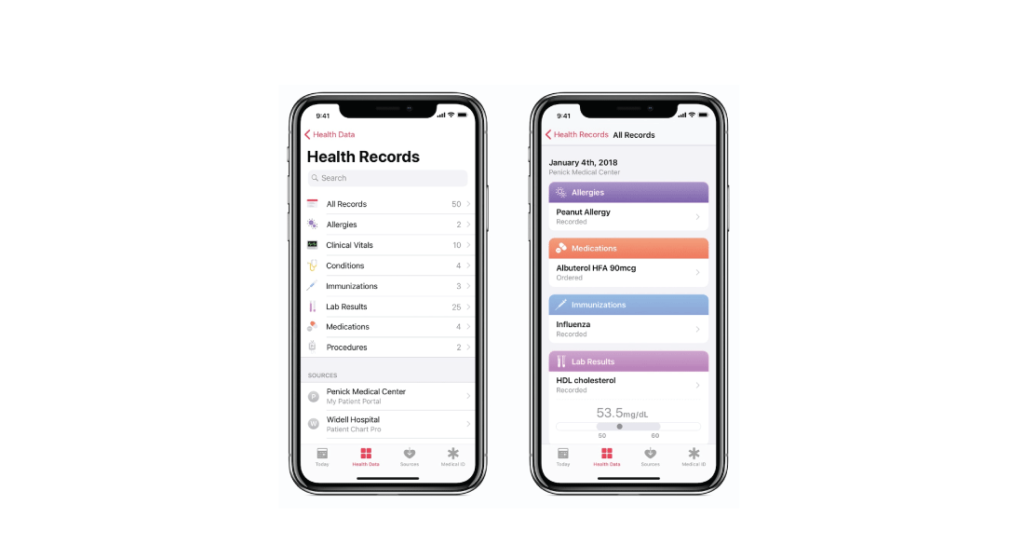Apple wants you to put your medical records on the iPhone

Health Records Brings Together Hospitals, Clinics, and the Existing Health App to Give a Fuller Snapshot of Health
Apple recently introduced a significant update to the Health app with the iOS 11.3 beta, debuting a feature for customers to see their medical records right on their iPhone. The updated Health Records section within the Health app brings together hospitals, clinics, and the existing Health app to make it easy for consumers to see their available medical data from multiple providers whenever they choose.
The announcement comes about a decade after Google launched a similar effort — and then pulled the plug, noting in its blog that its offering was used by a narrow amount of people — tech-savvy patients and caregivers and fitness enthusiasts.
In the past, patients’ medical records were held in multiple locations, requiring patients to log into each care provider’s website and piece together the information manually. Apple worked with the healthcare community to take a consumer-friendly approach, creating Health Records based on FHIR (Fast Healthcare Interoperability Resources), a standard for transferring electronic medical records.
According to a Washington Post article, patients have been able to log in to access their health records through Web portals. Some health systems offer apps where people can access lab results, message their doctors or make appointments. The new Apple offering will have the advantage of being able to integrate information from multiple providers, better reflecting how people seek and receive care in the real world, where a person’s primary-care doctor and specialist may not be at the same hospital.
With Apple’s beta Health app, consumers will have medical information from various institutions organized into one view covering allergies, conditions, immunizations, lab results, medications, procedures, and vitals, and will receive notifications when their data is updated. Health Records data is encrypted and protected with the user’s iPhone passcode.
The new Health Records section is available to the patients of the following medical institutions:
- Johns Hopkins Medicine – Baltimore, Maryland
- Cedars-Sinai – Los Angeles, California
- Penn Medicine – Philadelphia, Pennsylvania
- Geisinger Health System – Danville, Pennsylvania
- UC San Diego Health – San Diego, California
- UNC Health Care – Chapel Hill, North Carolina
- Rush University Medical Center – Chicago, Illinois
- Dignity Health – Arizona, California and Nevada
- Ochsner Health System – Jefferson Parish, Louisiana
- MedStar Health – Washington, D.C., Maryland and Virginia
- OhioHealth – Columbus, Ohio
- Cerner Healthe Clinic – Kansas City, Missouri
“Streamlining information sharing between patients and their caregivers can go a long way towards making the patient experience a positive one,” said Stephanie Reel, Chief Information Officer at Johns Hopkins Medicine. “This is why we are excited about working with Apple to make accessing secure medical records from an iPhone as simple for a patient as checking email.”
Apple has worked with three vendors of electronic medical records for the first wave of its apps: Epic, Cerner and AthenaHealth. More hospitals and other electronic health vendors will be able to join in coming months.

